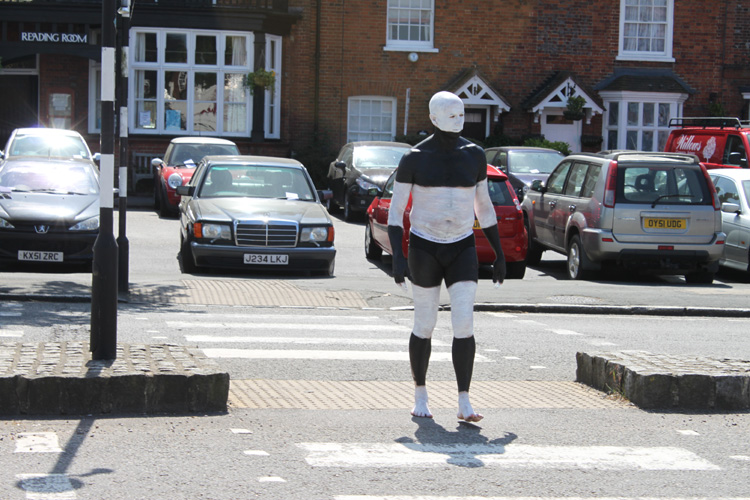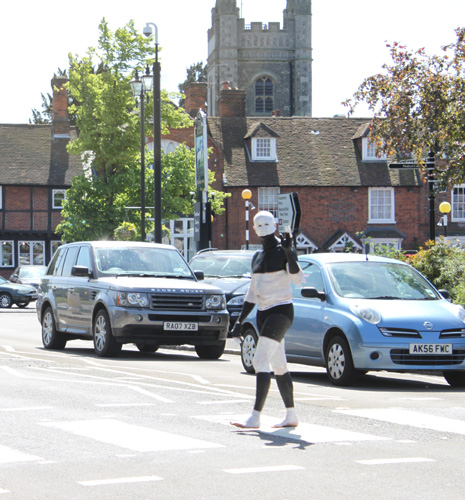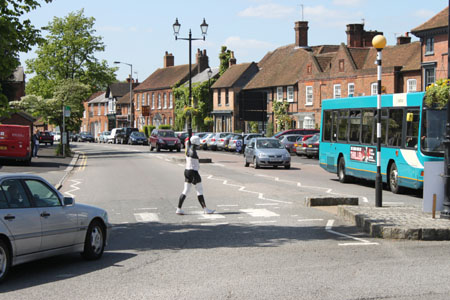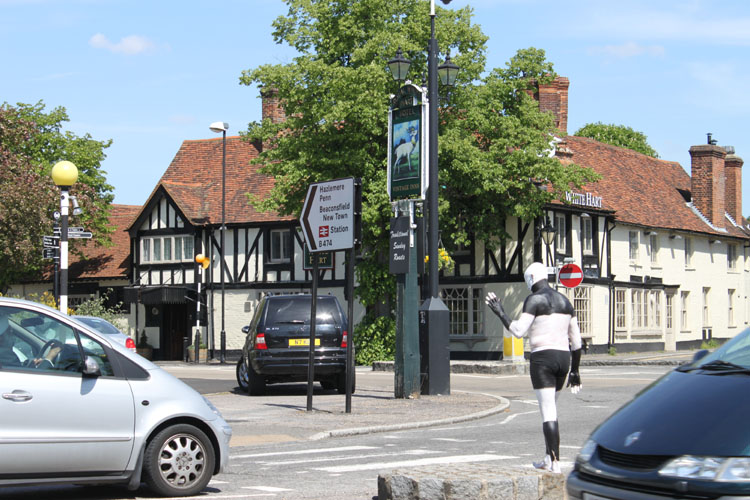Zebra Crossings
Cally Trench, Annie Rapstoff and Philip Lee
In Praise of Zebra Crossings
Cally Trench's homepage
Zebra Crossings
|
In Praise of Zebra Crosssings (2011) by Cally Trench, Annie Rapstoff and Philip Lee celebrates zebra crossings and their impact on human relations. Philip was painted by Cally in broad horizontal black-and-white stripes (12 inches wide, as on a Belisha beacon) in the open air. He then promenaded four times around a roundabout in Beaconsfield that has three zebra crossings. The intervention was photographed by Annie Rapstoff and by Cally Trench, and filmed by Alex Dewart. |
|
Cally Trench: Zebra crossings are a British invention and were introduced in 1949. Belisha beacons came earlier; they were introduced in 1934 by the then Minister for Transport Leslie Hore Belisha. Unlike pedestrian crossings involving traffic lights, zebra crossings require drivers and pedestrians to engage in a social contract with each other and to recognise each other's humanity. Annie Rapstoff: The zebra crossing is characterised by parallel black/unpainted lines and white lines, similar to that of a zebra. These stripes are usually 40 to 60 centimetres wide. Our streets are usually built to segregate pedestrians from vehicle users; the zebra crossing is a clearly delineated space in which the pedestrian can move freely without being confined to pavements and footpaths. The zebra crossing is a place of negotiation between pedestrians, cyclists and vehicle users. It is an example of a shared space, which relies on eye contact and interaction for its effectiveness. |
|
|
|
|
|
|
Philip Lee: I will always remember the expression on the face of one driver as he waited to let me pass: wide-eyed, bemused, disbelieving. By the time of my second or third circuit there were people waiting for me to come along the path; obviously they had seen what was going on and thought that they would lie in wait in order to take their photographs. As I came around a building three young girls were blocking my route. Smiling and respectfully they took their photographs as I walked around them on my way to the next crossing. At a similar point in my circuit, it was me who surprised a mother with a pushchair and children, as I suddenly appeared from around the side of a building. She was taken aback as she struggled with her encumbrances but was clearly amused by our encounter. At the end of my last circuit a silver van man who nearly drove into me said that he was sorry mate - he hadn't notice me, and roared with laughter. He got the point I think. His relationship with zebra crossings and driving was not entirely as defined by the Highway Code. He followed me slowly as I walked around the roundabout, incidentally holding up a patient queue of cars, as he tried to take a photograph of me with his mobile phone. I think he yelled his approval as he motored off but I may have been mistaken. I have come to embrace the need that people have to record in images anything they see that is extraordinary. I admit to the urge to do the same whenever I see anything body-oriented in the street. In fact I am disappointed when people don't want to take photographs. Mobile phone photography is approval, interest, recording a memory, and it implies that they will be talking about what they have seen with others. |
|




